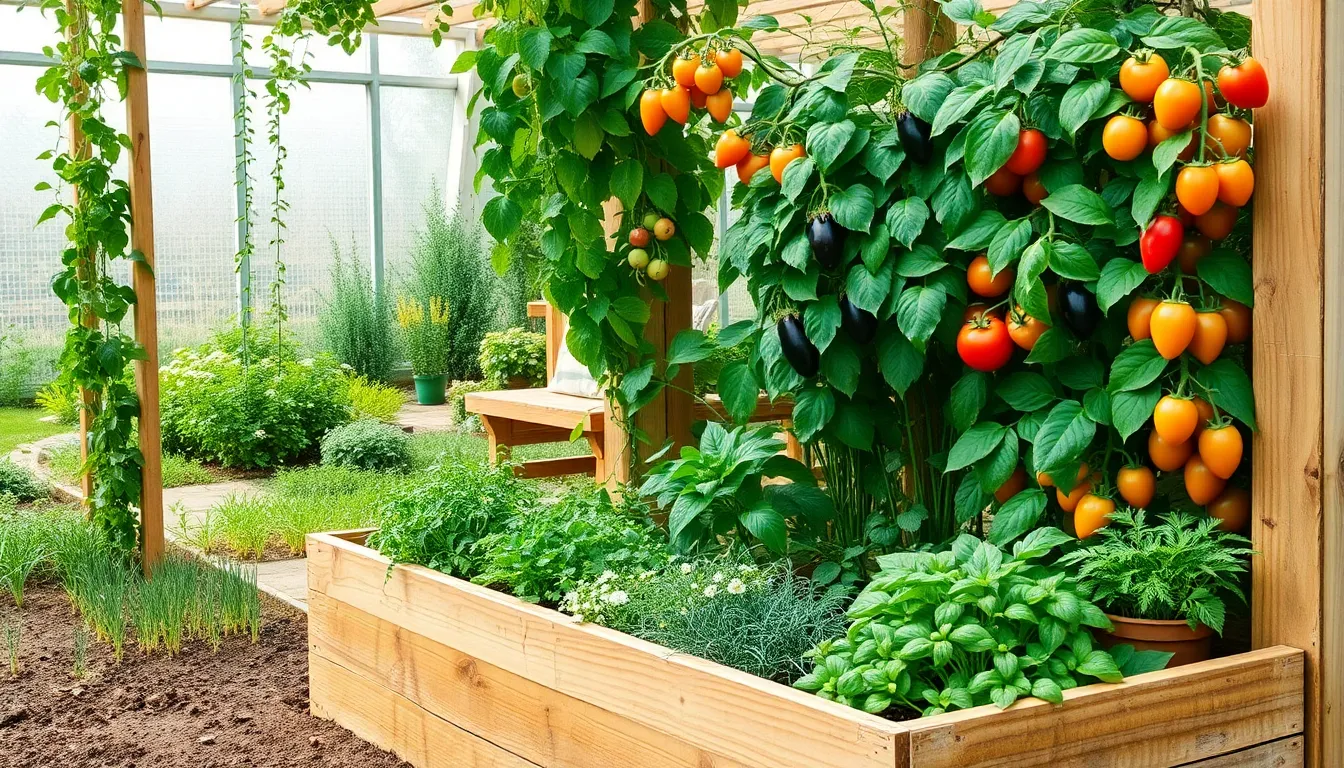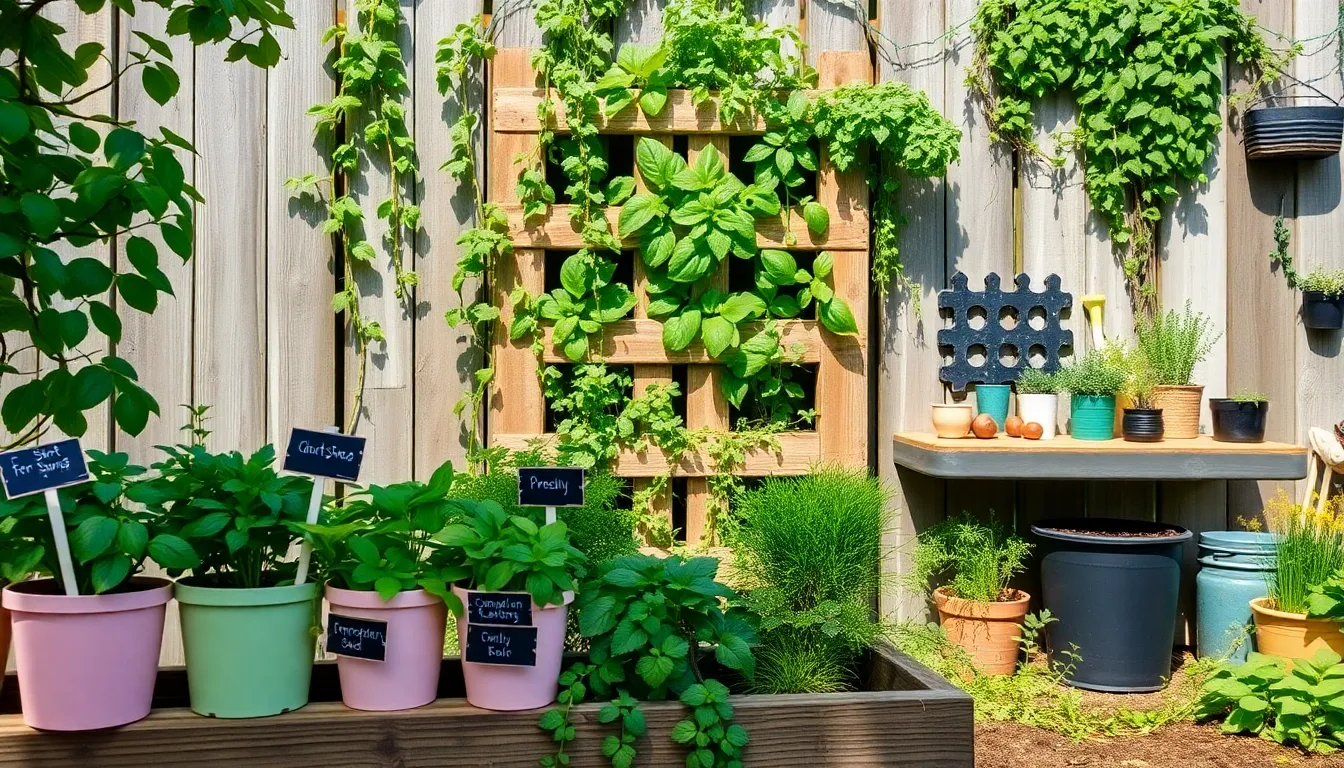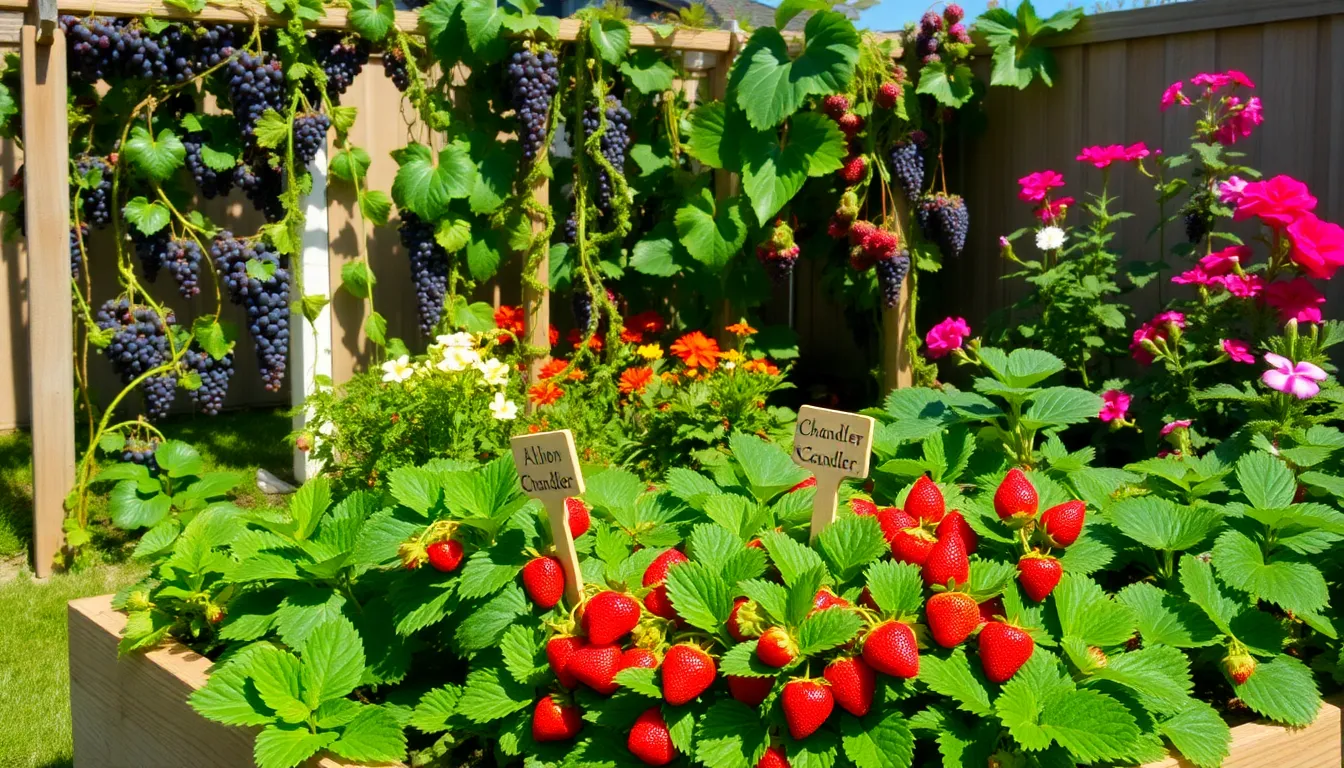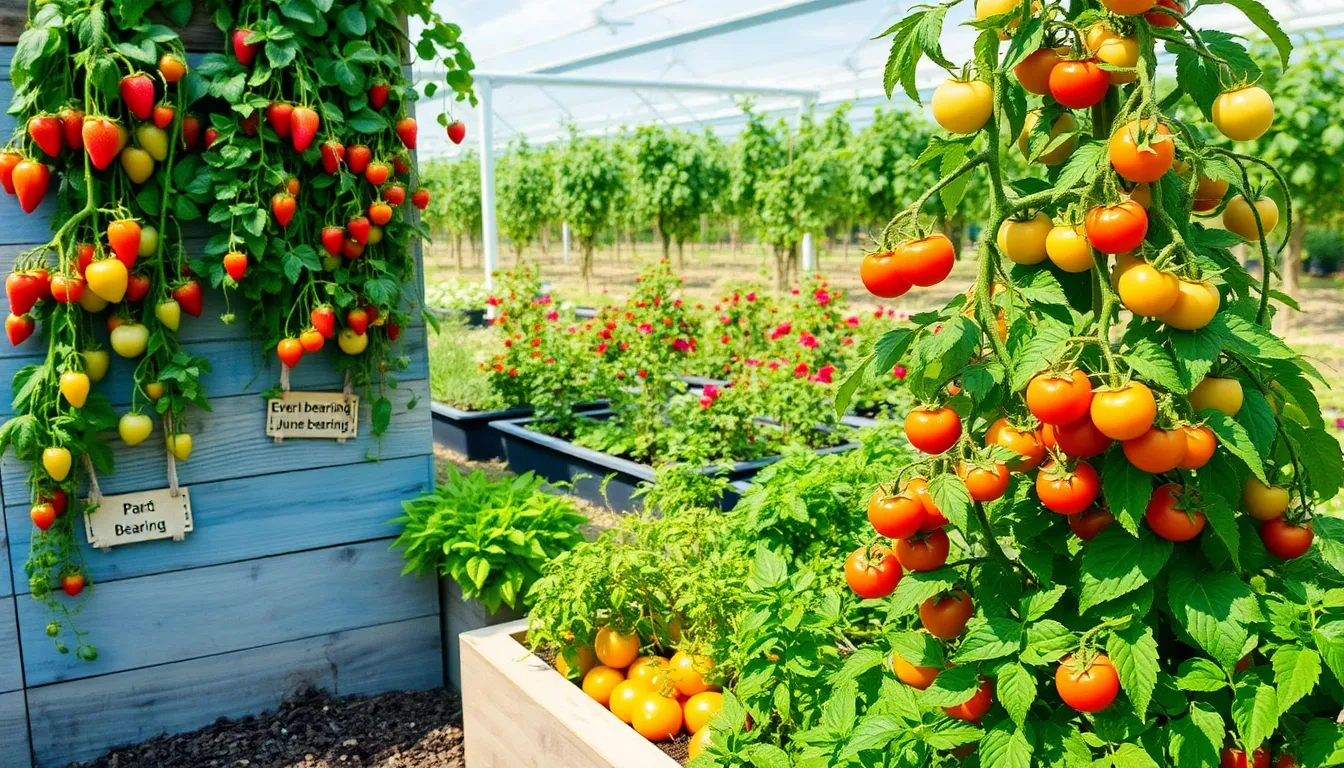Welcome to the enchanting world of vegetable gardening, where creativity meets nature’s bounty in your very own backyard! Whether you’re just starting out or have been nurturing your green thumb for years, “11 Beautiful Vegetable Garden Ideas” is your gateway to transforming any patch of earth into a flourishing oasis. This guide is crafted to inspire and empower you, offering a treasure trove of designs that blend functionality with aesthetic charm.
In these pages, you’ll discover a delightful array of garden layouts that promise to maximize both your harvest and your sense of accomplishment. From vertical gardens that make the most of limited space to whimsical potager designs that marry beauty and utility, each idea is a stepping stone to gardening success. With these creative techniques at your fingertips, you’ll not only grow delicious produce but also cultivate a deeper connection to the natural world. Rest assured, whether you’re aiming to fill your kitchen with homegrown flavors or simply seeking the joy of nurturing life, this guide provides the tools and inspiration you need to thrive.
Incorporate Raised Wooden Beds
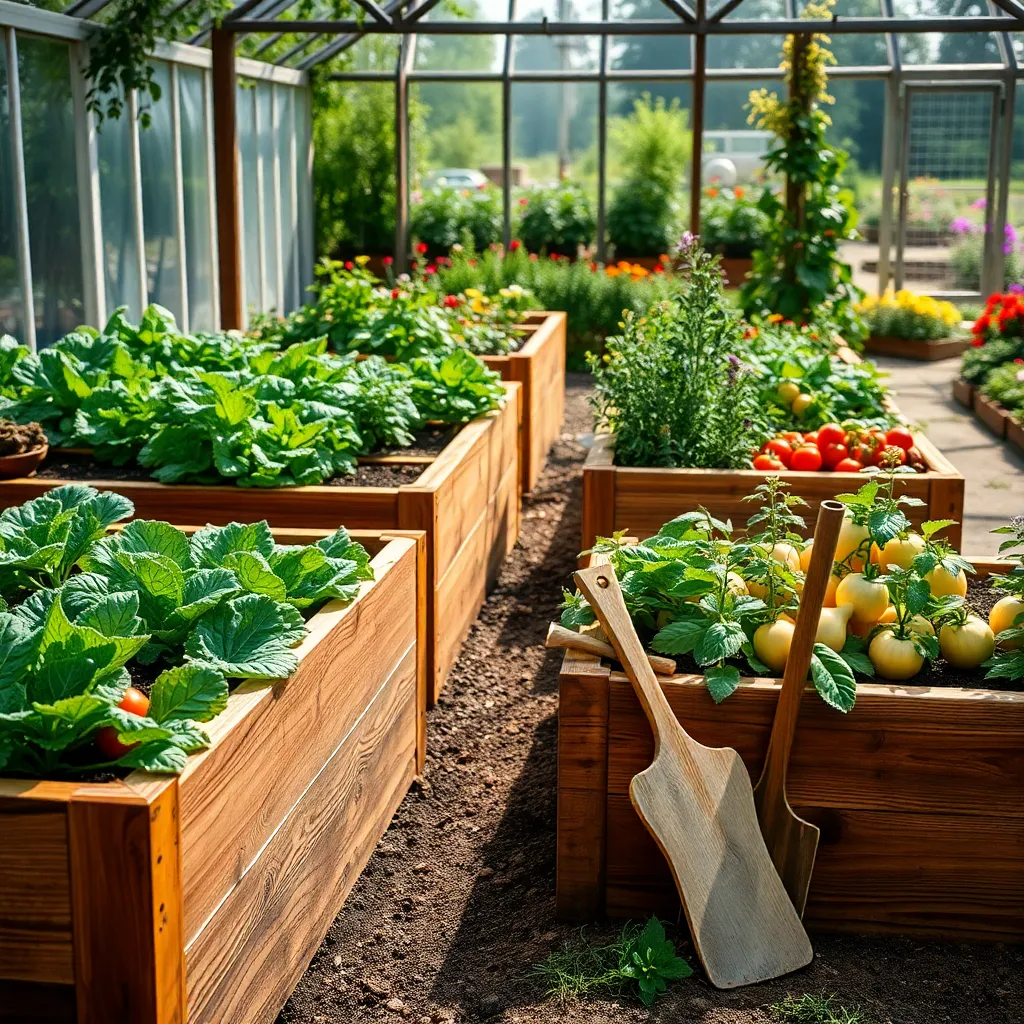
Raised wooden beds are an excellent way to organize your vegetable garden while providing better soil drainage. They offer the flexibility to optimize soil quality by using a mix of compost, peat moss, and vermiculite, which improves aeration and moisture retention.
Using untreated wood like cedar or redwood ensures longevity and prevents chemical leaching into your garden. These woods are naturally rot-resistant and can last for years, making them an environmentally friendly choice.
Position your raised beds in an area that receives at least six to eight hours of sunlight daily, as most vegetables require this amount of light to thrive. To improve accessibility and maintenance, keep pathways between beds clear and wide enough for easy movement.
For those seeking more advanced techniques, consider incorporating a drip irrigation system to maintain consistent soil moisture while conserving water. Additionally, using row covers or cold frames can extend your growing season, allowing you to enjoy fresh produce even in cooler months.
Utilize Vertical Planting Structures
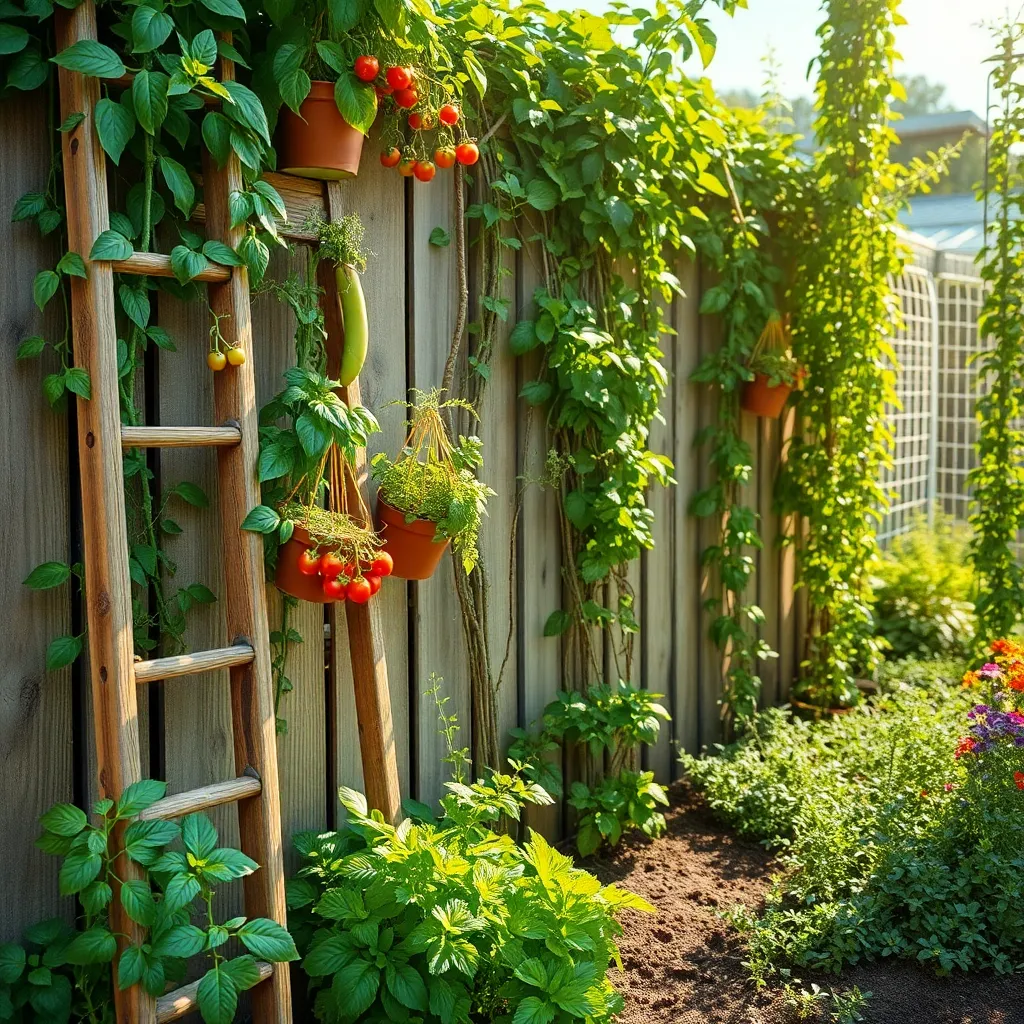
Enhancing your vegetable garden with vertical planting structures can significantly maximize space and increase yield. By using trellises, arbors, or even simple stakes, you can train climbing plants like beans, peas, and cucumbers to grow upwards, freeing up ground space for other crops.
Choose sturdy materials such as wood or metal that can withstand the weight of mature plants and exposure to the elements. Position these structures strategically to ensure they don’t cast excessive shade on sun-loving plants, maintaining optimal growing conditions.
Consider the specific growing requirements of your vertical crops to ensure success. For instance, cucumbers thrive best in well-drained soil with consistent moisture, so mulching around their base can help retain soil moisture.
For beginners, start with easy climbers like peas, which are forgiving and require minimal maintenance beyond regular watering. More advanced gardeners might experiment with vertical hydroponic systems, which offer a soil-free option for growing leafy greens and herbs.
Remember, vertical gardening is not just about functionality but can also add an aesthetic dimension to your garden. By choosing flowering or colorful climbing plants, you can create a garden space that’s both productive and visually appealing.
Interplant Flowers for Aesthetic Appeal
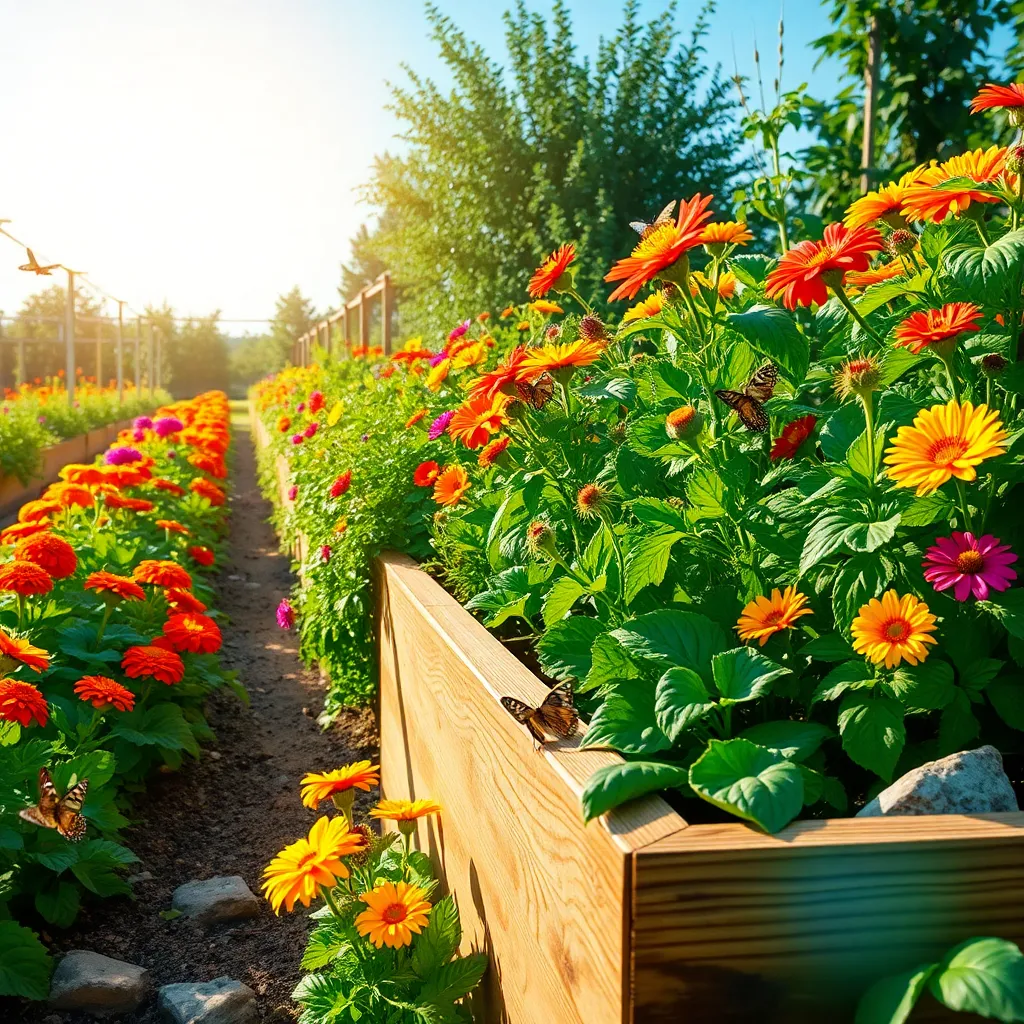
Interplanting flowers in your vegetable garden is a wonderful way to add bursts of color and enhance the overall aesthetic appeal of your space. This practice not only beautifies your garden but can also attract beneficial insects that help with pollination and pest control.
Consider planting marigolds among your vegetables; they are known to deter nematodes and other pests. Marigolds thrive in well-drained soil and require full sun, making them an excellent companion for sun-loving vegetables like tomatoes and peppers.
For a more advanced touch, try integrating nasturtiums, which can effectively repel aphids and squash bugs. Nasturtiums prefer slightly poorer soil and will flourish with minimal fertilization, making them a low-maintenance addition to your garden.
Another option is to incorporate calendula, which can add a splash of yellow and orange to your garden beds. These flowers are hardy and can tolerate a range of soil types, thriving best with regular watering to keep the soil consistently moist.
Create Pathways with Natural Stones
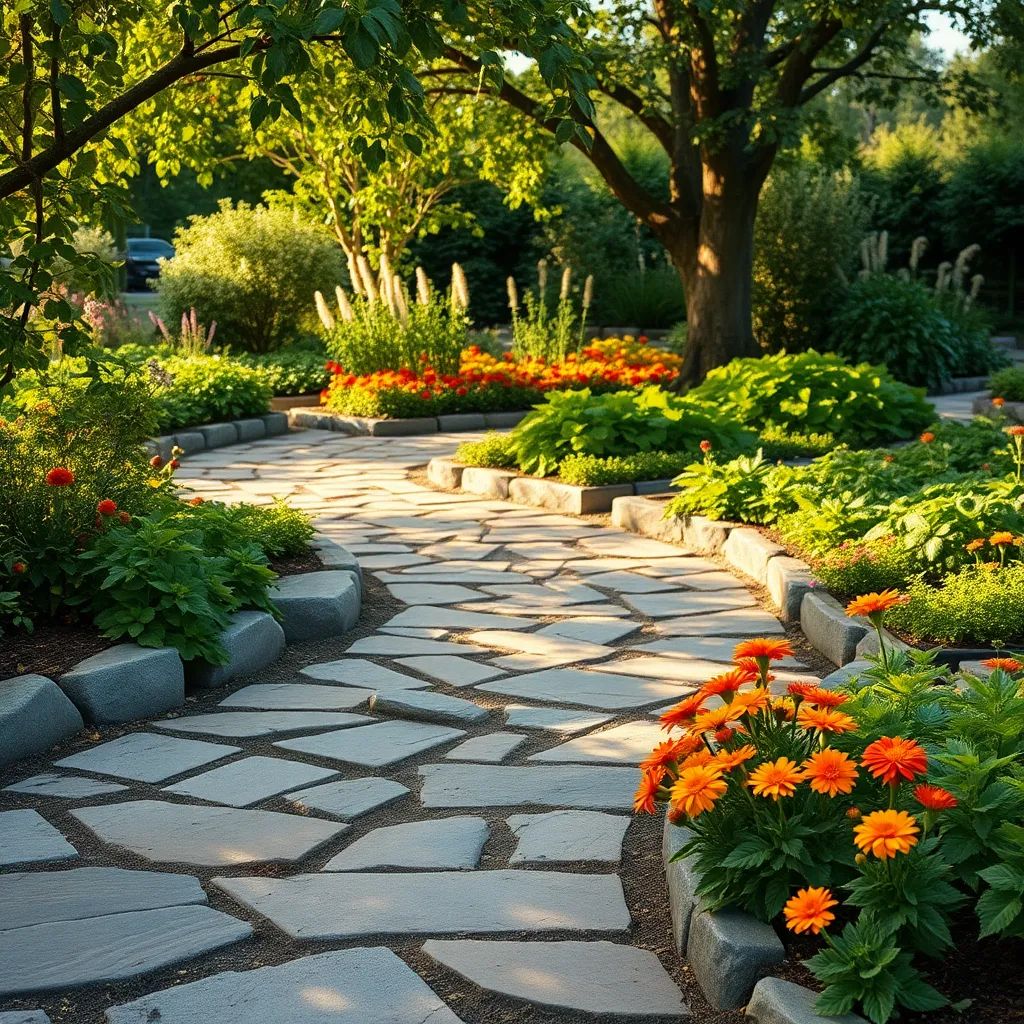
Creating pathways with natural stones in your vegetable garden can enhance both functionality and beauty. **Natural stone paths provide a stable walkway**, protecting your plants from trampling while adding visual interest to the garden layout.
Begin by selecting stones that complement your garden’s aesthetic and are readily available in your area. **Opt for stones with flat surfaces** for easier walking and maintenance; these can include slate, limestone, or flagstone.
To install a stone pathway, first outline the path using a garden hose or string for guidance. Excavate the area to a depth of about 2 inches, ensuring a level base, and fill it with a layer of sand or gravel to aid drainage and stability.
Place the stones in the desired pattern, leaving small gaps between them for water runoff and plant growth. **For added stability**, consider setting the stones into a thin layer of mortar or sand to prevent shifting over time.
Regular maintenance involves keeping the pathway clear of debris and periodically checking for stone movement. **For a thriving garden, ensure the stones do not obstruct water flow** to your plants, particularly during heavy rains.
Add Decorative Garden Edging
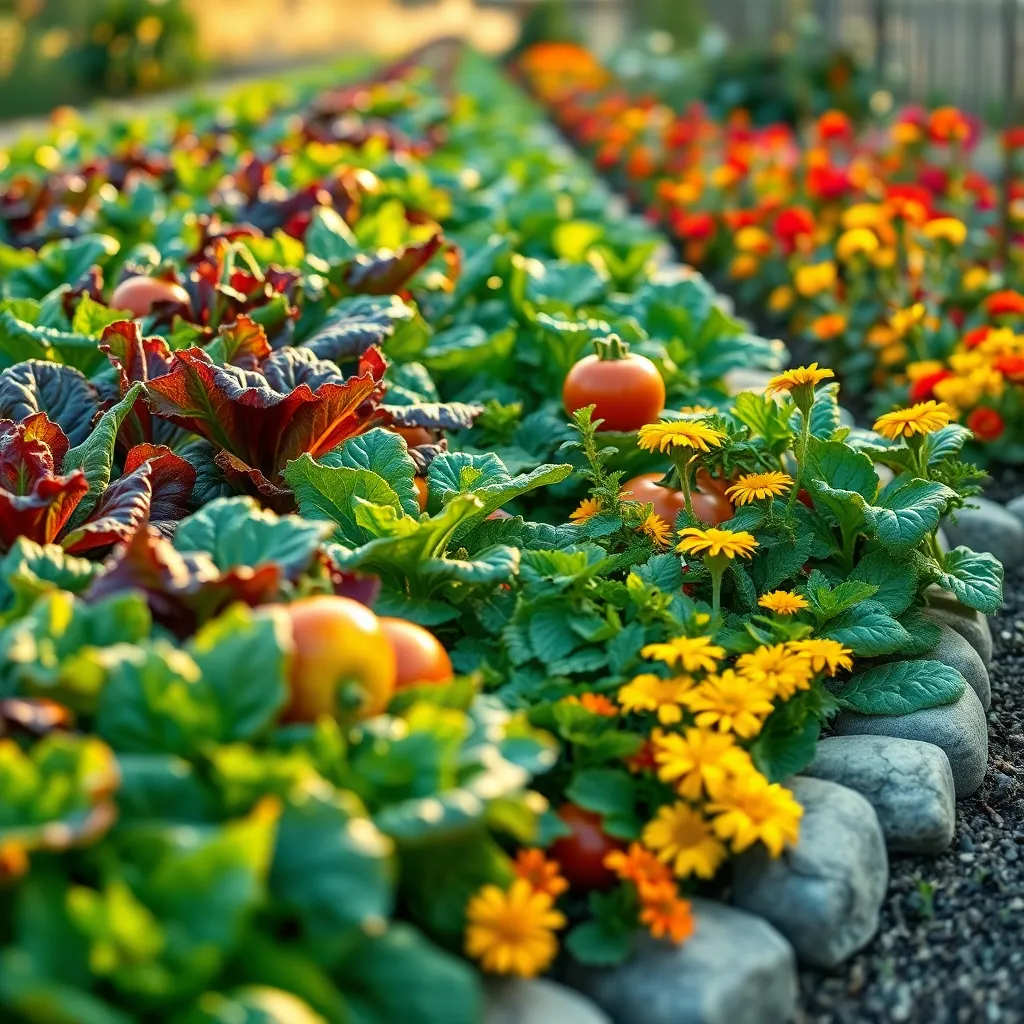
Enhancing your vegetable garden with decorative edging can add both beauty and functionality. It helps define the boundaries of your garden beds, keeping mulch and soil in place while creating a neat appearance.
There are various materials you can use for garden edging, such as brick, stone, or recycled materials. Choose materials that complement your garden’s overall aesthetic and withstand your local climate.
For those new to gardening, simple wooden or plastic edging can be an easy and cost-effective option. Make sure to bury the edges slightly in the soil to ensure stability and prevent weeds from creeping into your vegetable beds.
Experienced gardeners might opt for more intricate designs, such as using curved metal or crafted stonework. These materials can be more challenging to install, but they offer a more customized look that can really elevate your garden’s design.
Regardless of your choice, maintain the edging regularly to prevent overgrowth and displacement. Regular maintenance ensures your garden remains tidy and your plants have the best chance to thrive.
Designate Zones with Colorful Mulch
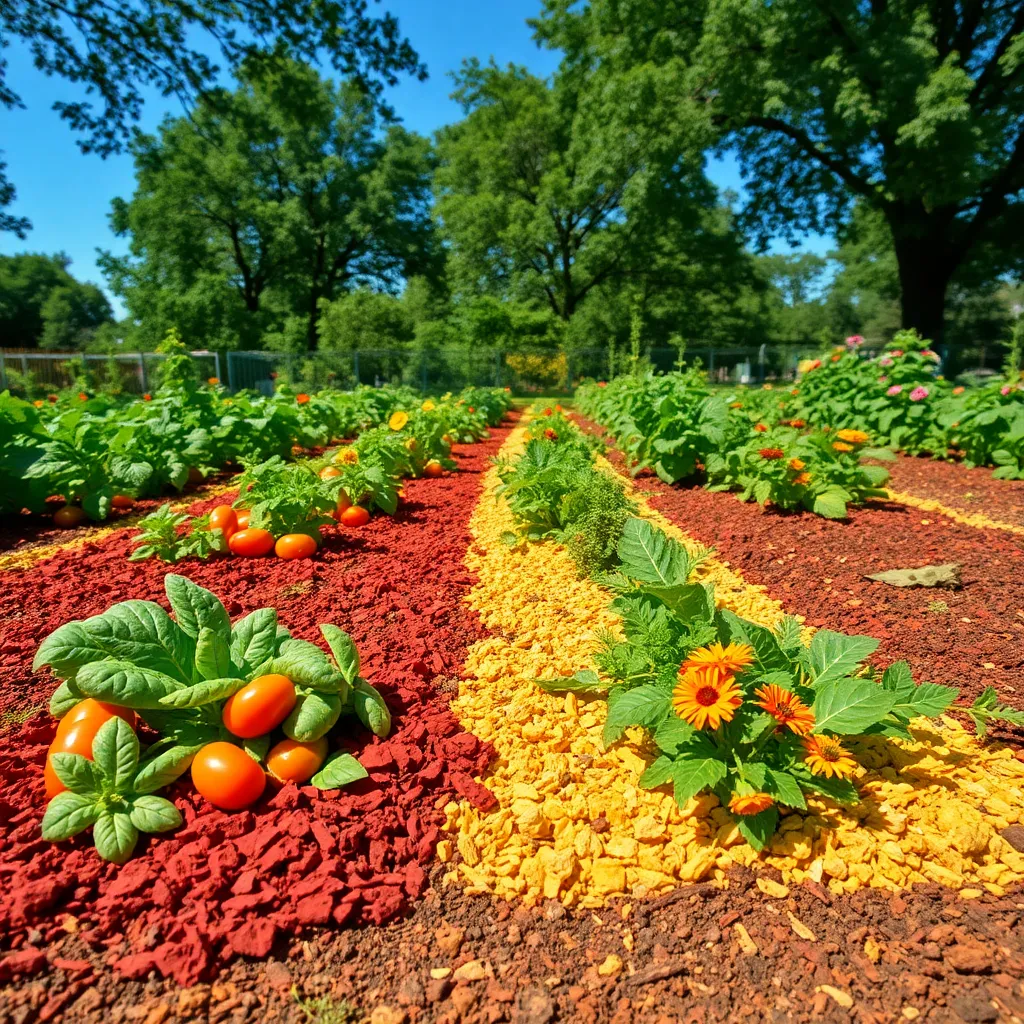
Enhancing your vegetable garden with colorful mulch not only elevates its aesthetic appeal but also serves practical purposes. By using mulch in shades like red, brown, or black, you can visually designate different zones within your garden, making navigation easier and more enjoyable.
Different types of mulch offer various benefits, such as improved moisture retention and weed suppression. Organic mulches, like shredded bark or cocoa hulls, enrich the soil as they decompose, providing nutrients that are essential for plant growth.
For a vibrant look, consider using colored wood chips that are dyed with non-toxic, vegetable-based dyes. These colored mulches can create striking contrasts against the green foliage, enhancing the overall design of your garden while maintaining environmental safety.
Applying a layer of mulch—around 2 to 3 inches thick—helps maintain consistent soil temperature, which is crucial for root health. Remember to leave a small gap around the base of each plant to prevent moisture build-up, which can lead to root rot.
Employ Companion Planting Techniques

Companion planting is a strategic approach that promotes a healthier and more productive garden by pairing plants that benefit each other. For example, planting marigolds with tomatoes can help deter pests like nematodes, while beans can enrich the soil with nitrogen for leafy greens.
Start by understanding the specific needs of your plants and how they can complement each other. Carrots and onions make a great pair because onions repel carrot flies, and the small footprint of carrots doesn’t compete with onions for resources.
Consider the growth habits and nutrient needs when selecting companion plants. Tall plants like corn can provide a natural trellis for climbing beans, while the beans return nitrogen to the soil, benefiting the corn.
Experiment with different combinations to find what works best in your garden’s unique conditions. Some advanced gardeners even use trap cropping, planting a small amount of a pest-attractive plant to lure insects away from main crops, enhancing pest management naturally.
Integrate Ornamental Vegetables
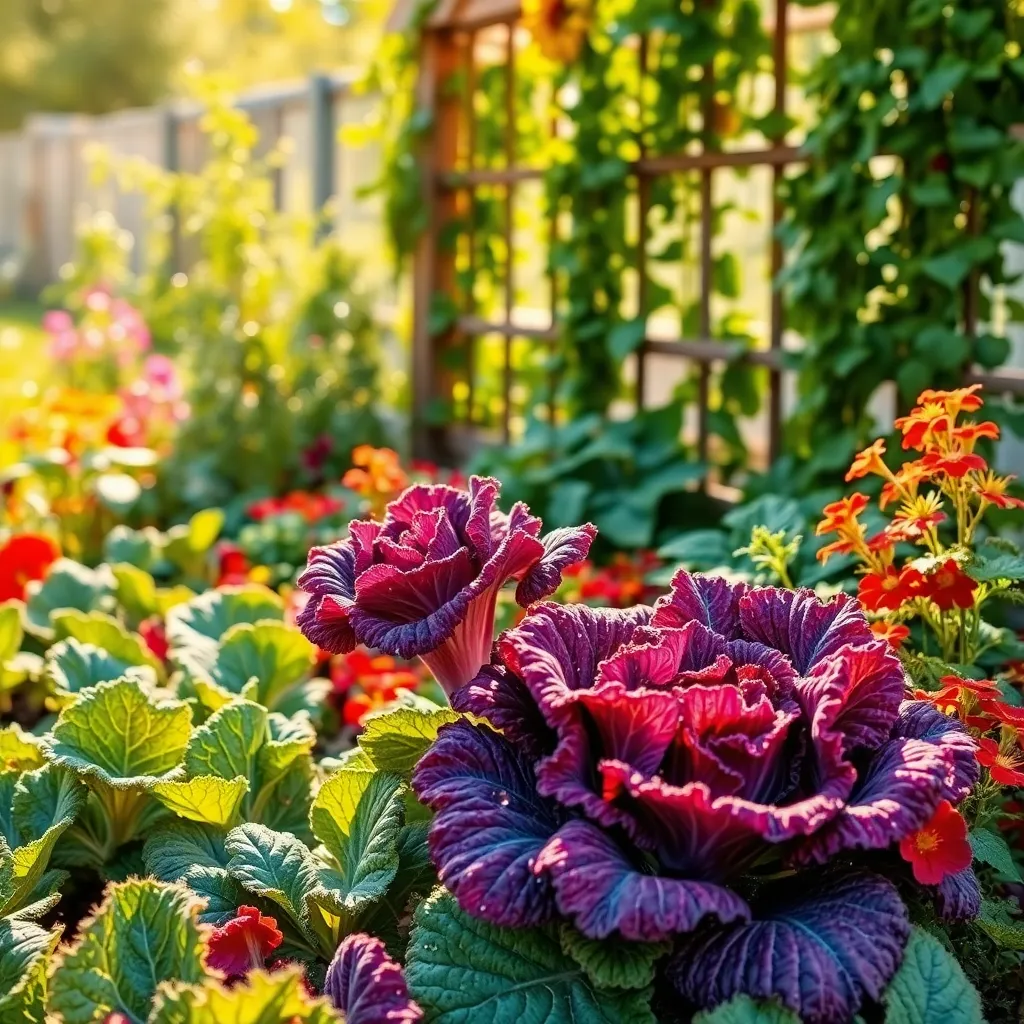
Incorporating ornamental vegetables into your garden can add vibrant colors and unique textures. These vegetables not only provide visual appeal but are also edible, offering a dual-purpose solution for your gardening space.
Start by choosing vegetables that have both aesthetic and culinary value, such as kale, chard, and purple basil. Kale varieties like ‘Redbor’ have striking purple leaves, making them a beautiful focal point in any garden bed.
Swiss chard offers a rainbow of stem colors, from bright yellow to deep red, that can brighten up borders and pathways. It’s also easy to grow and thrives in well-drained soil with moderate watering, making it perfect for beginners.
For a more advanced touch, consider planting artichokes, which have dramatic foliage and striking flower heads. These perennials require full sun and rich, well-draining soil, and they can serve as a bold statement piece in your garden.
Install Eye-Catching Trellises
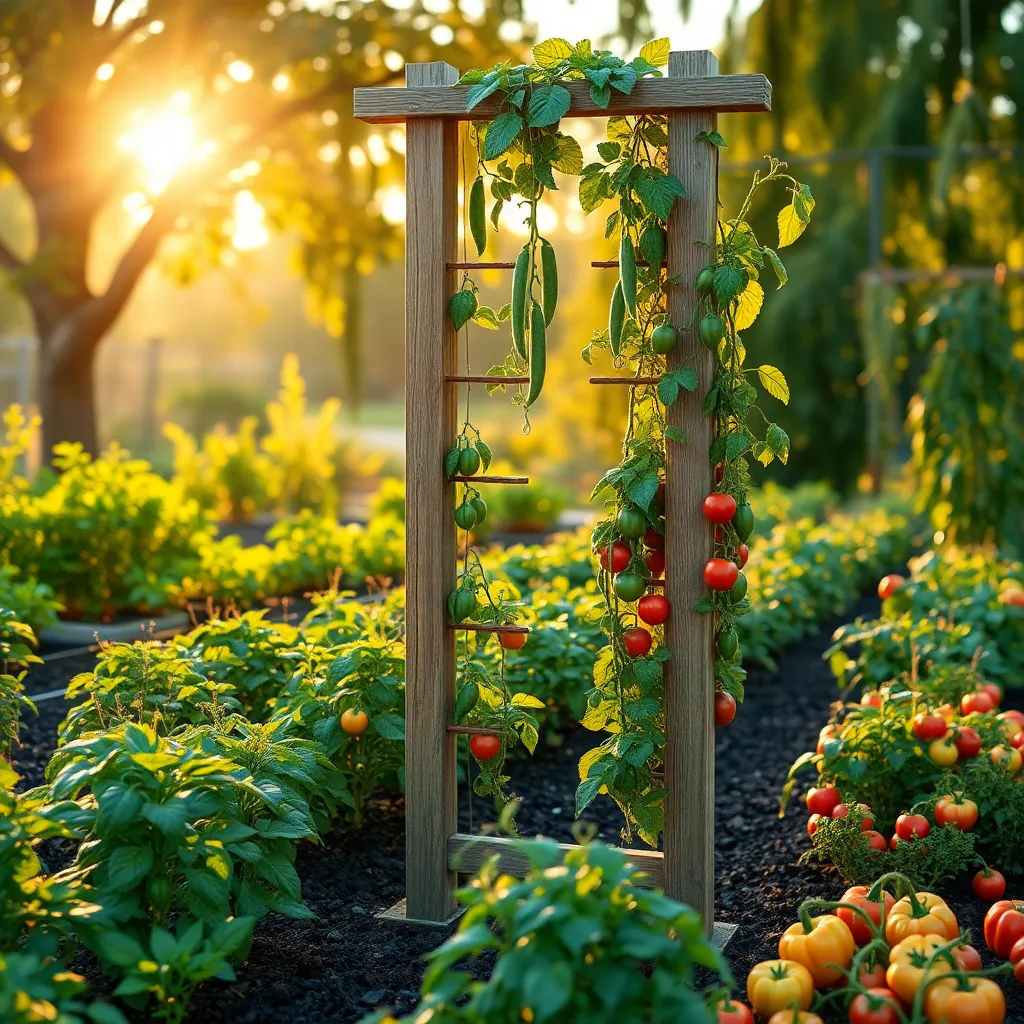
Trellises serve as both functional and aesthetic elements in a vegetable garden, providing support for climbing plants while adding vertical interest. Choose trellises made from durable materials like metal or wood to withstand weather conditions and support the weight of your plants.
When installing a trellis, ensure it is secured firmly in the ground to prevent it from toppling over as plants grow. For optimal plant health, position the trellis in an area that receives ample sunlight, as most climbing vegetables thrive with six to eight hours of direct sun daily.
Consider planting climbing vegetables such as peas, beans, or cucumbers, which naturally cling to trellises and can enhance your garden’s productivity. Space the seeds or seedlings appropriately—typically around 4 to 6 inches apart—to ensure each plant has enough room to grow and receive adequate air circulation.
For more advanced gardeners, experiment with creating living walls by combining climbing vegetables with flowering vines for a visually striking effect. Make sure to regularly check the growth and guide the tendrils toward the trellis, encouraging them to wrap around for better support.
Use Recycled Materials Creatively
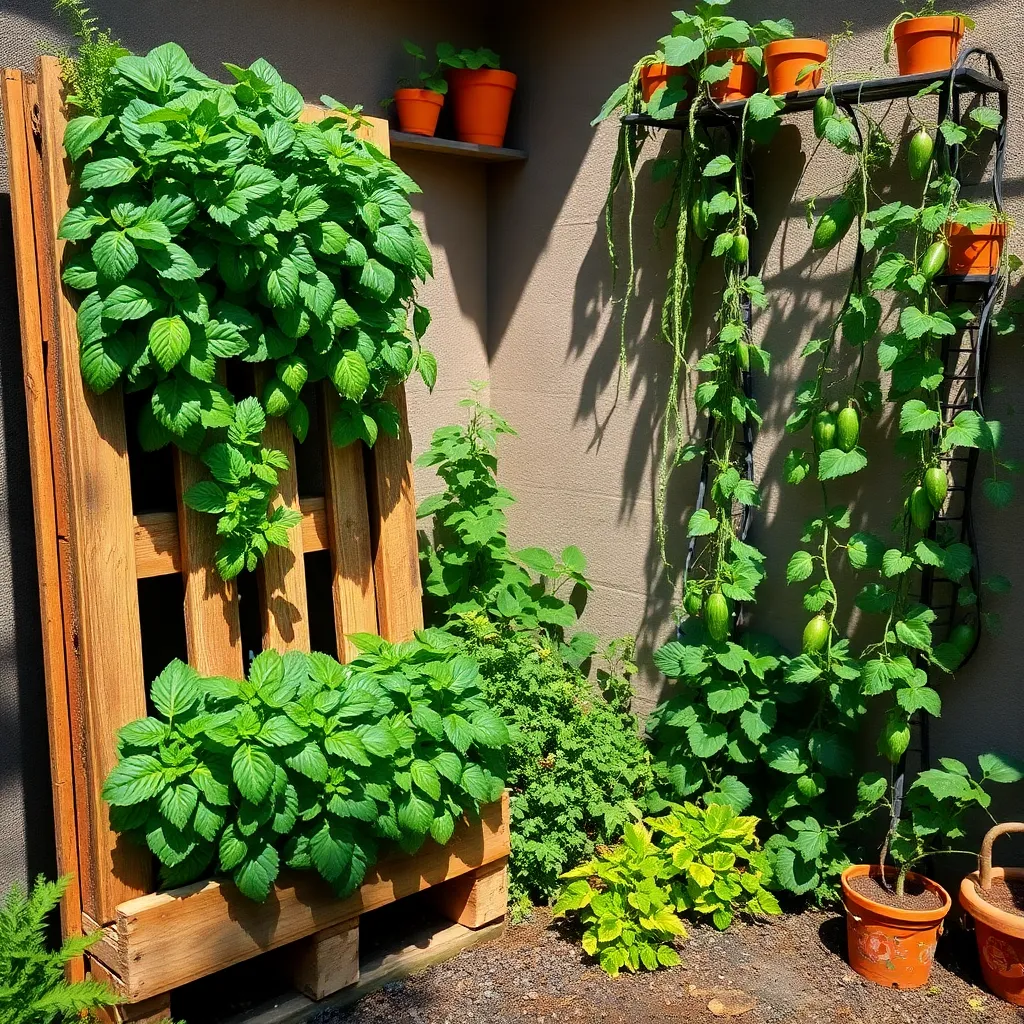
Recycling materials in your garden not only reduces waste but also adds a unique touch to your vegetable plot. Consider using old pallets to create raised beds, which provide excellent drainage and help maintain warm soil temperatures.
Repurposing glass bottles as garden edging can be both decorative and functional. Bury them neck down to outline pathways or garden beds, ensuring they are securely placed to avoid shifting.
Old tires can be turned into colorful planters by painting them and stacking them to desired heights. They provide excellent insulation for plants, keeping roots warm in cooler climates and adding a splash of color to your garden.
For those with scrap wood lying around, crafting bespoke plant markers is a great way to stay organized. Simply cut the wood into small stakes, paint them with weatherproof paint, and label them to keep track of your plants.
Plant Edible Borders for Beauty
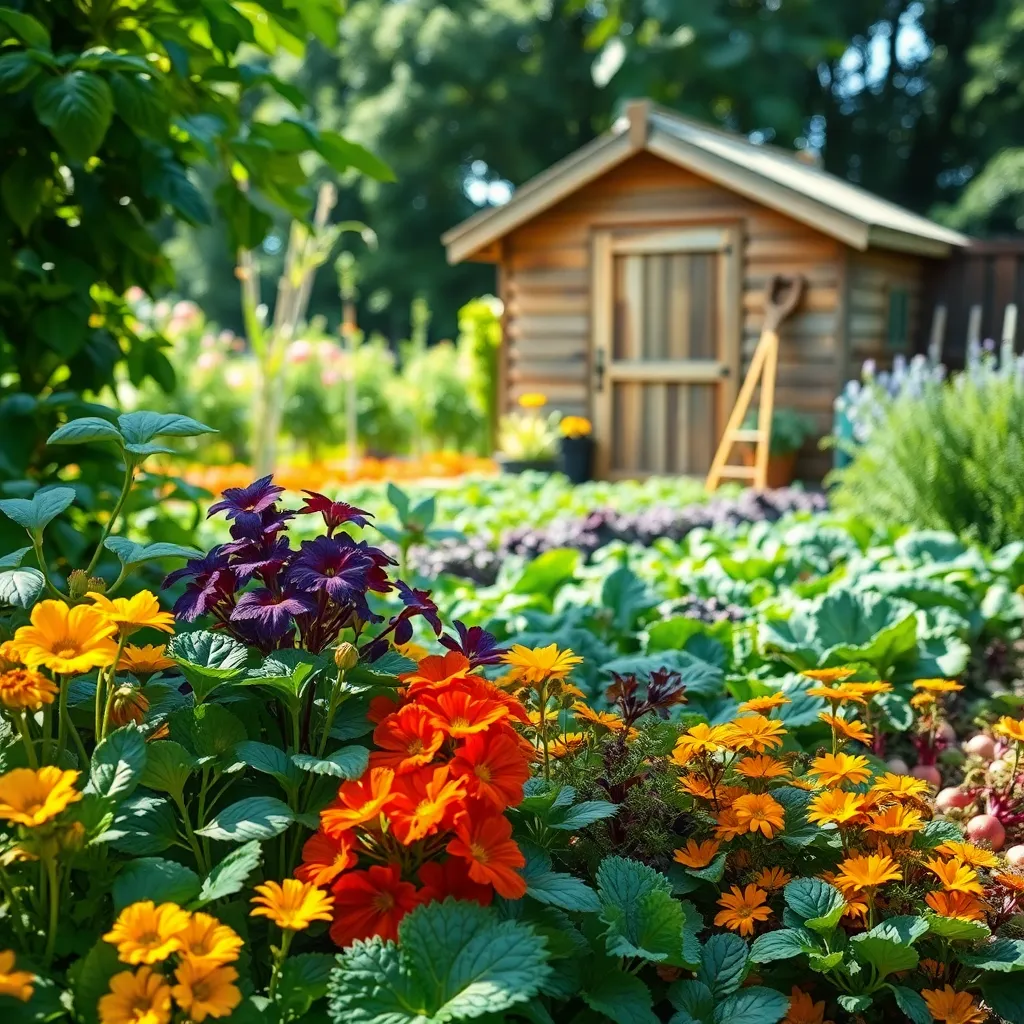
Edible borders are a delightful way to combine beauty and utility in your garden. By planting vegetables and herbs along the edges, you create a lush frame that can also provide fresh produce for your kitchen.
Consider using colorful varieties like purple basil or rainbow chard to add visual interest. These plants not only enhance the garden’s aesthetics but also thrive well in full sun and well-drained soil, making them easy to care for.
For beginners, start with easy-to-grow herbs like thyme and oregano, which are both resilient and aromatic. These herbs prefer a loamy soil with moderate watering, ensuring they don’t dry out but aren’t waterlogged either.
More advanced gardeners might experiment with layering their borders by planting taller plants like kale at the back and shorter, creeping varieties like marjoram at the front. This technique not only maximizes space but also creates a dynamic visual effect.
Regular maintenance, such as pruning and harvesting, encourages lush growth and productivity. Mulching can help retain moisture and suppress weeds, making your edible borders both beautiful and low-maintenance.
Conclusion: Growing Success with These Plants
As you journey through the delightful world of vegetable gardens, each concept reflects a nurturing aspect of relationships. From the foundational structure of raised beds to the creativity sparked by vertical gardening, these ideas remind us of the importance of support, growth, and adaptability in our connections. Companion planting teaches us the value of harmony, while the vibrant mix of colors in a patch emphasizes diversity and acceptance. Incorporating pathways reflects the need for clear communication, and the inclusion of sensory gardens underscores the enrichment that comes from engaging all senses in our interactions. Meanwhile, container gardens highlight flexibility, and water features symbolize emotional depth.
Now, take a moment to reflect on which garden idea resonates most with your current relationship needs. Implement one small change today—whether it’s initiating a heartfelt conversation or planning a joint activity that nurtures mutual growth.
Don’t let these insights slip away! Bookmark this article as your go-to guide for cultivating stronger, more meaningful connections. As you embrace these gardening principles, watch your relationships flourish with vitality and resilience, paving the way for a thriving, fulfilling future together.

